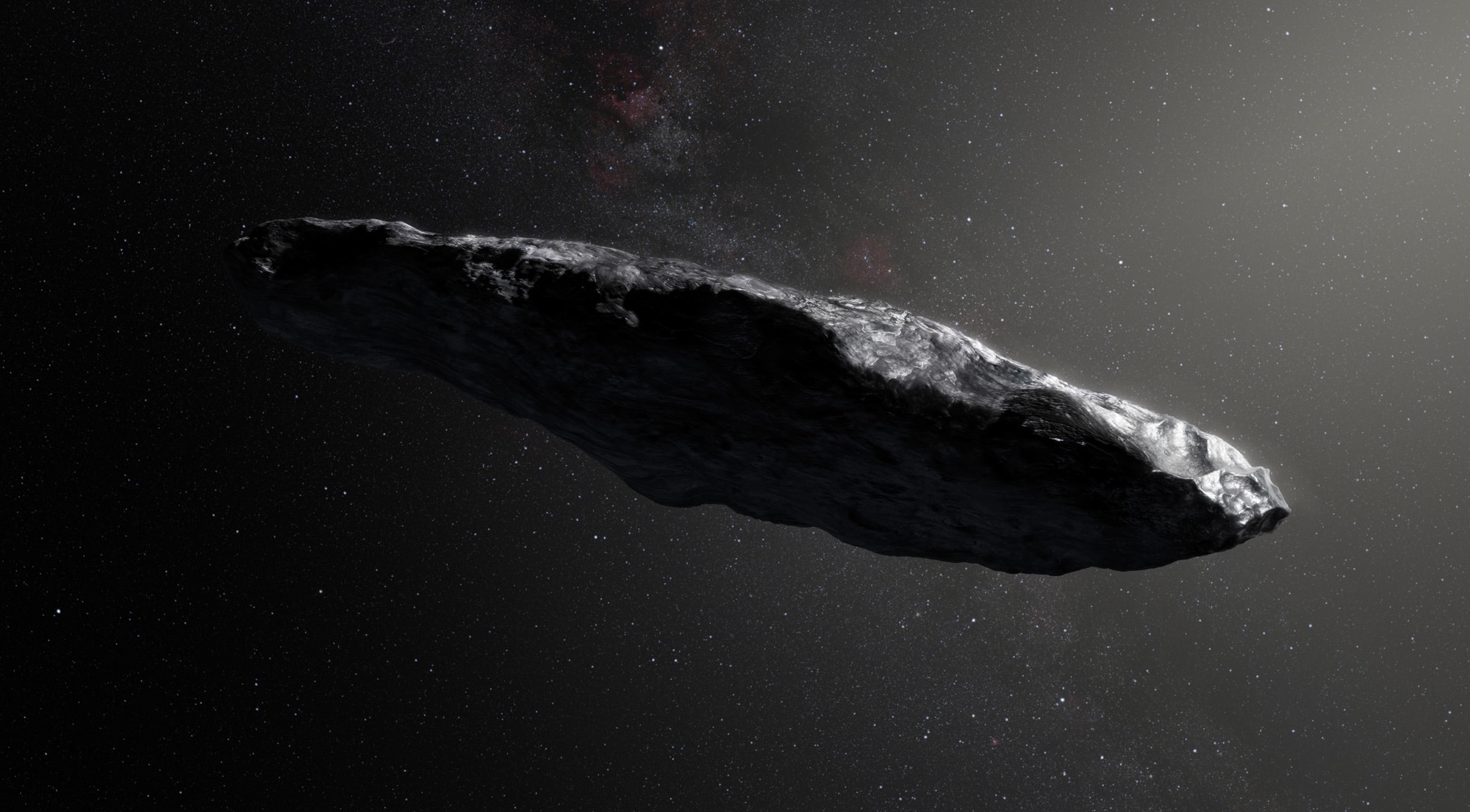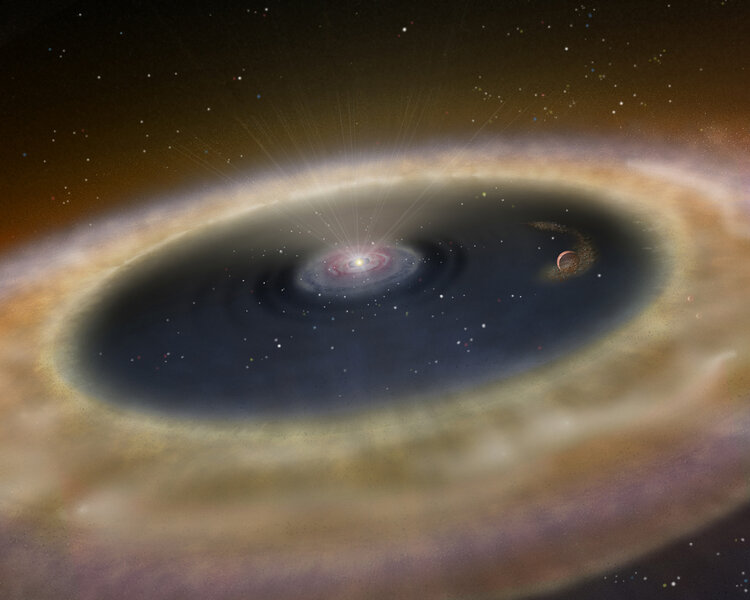Create a free profile to get unlimited access to exclusive videos, sweepstakes, and more!
Could interstellar visitors like 'Oumuamua actually help planets form?

So the weird interstellar asteroid/comet/MegaSnowflake/NotASpaceship 'Oumuamua is the gift that keeps on giving.
Remember 'Oumuamua? Discovered in 2017, it quickly became apparent that it was no ordinary space object; its velocity was so high it must have come from deep interstellar space. It was thought to be a comet at first (an icy body from some other solar system, since those are the easiest to dislodge and eject into space), then reclassified as an asteroid when no cometary activity was seen — that is, gas blowing off it as any ice warmed when it neared the Sun— then re-reclassified as a comet when its motion implied it was leaking material, just too weakly to directly detect.
Then some folks thought it might be a spaceship — still going with "nah" on that one — and then (and this is my favorite thing) others concluded it might be a huge porous fractal snowflake. As odd as that sounds, it actually makes sense given what we know about it.
It's still unclear where it came from or, more importantly, how many others like it might be out there. It's a little bit tough to extrapolate from a single case, but given its path and brightness, and how good our surveys are (meaning how big an object we can see at a given distance from Earth), it's possible that the galaxy is littered with as many as 1014 'Oumuamua-sized objects per cubic light year! That's a hundred trillion objects!
That's a vast number. And in a galaxy the size of ours, that means there could be — and this gives me the heebie-jeebies just to type this number out — a thousand trillion trillion 100-meter class interstellar rocks out there!
You'd think this would have some effect on the galaxy… and a pair of astronomers think it very well might. They suspect that interstellar objects like 'Oumuamua help planets like ours form.
Oh, I dig this idea.
Stars form from huge clouds of gas and dust called molecular clouds. Clumps in the clouds collapse (perhaps disturbed by the wind of a nearby massive star or a supernova), start to spin, and flatten out into a disk. The star forms in the center of that disk, and planets form farther out in the disk itself (which we call the protoplanetary disk for obvious reasons).
But it's not that easy. Way out in the disk there are teeny tiny grains of material, microscopic bits of silicaceous (rocky) material and ice. First these stick together, slowly growing. Eventually they become millimeter sized, then centimeter, then growing into objects about 100 meters across. At that point we call them planetesimals. These then collide, stick together, and grow to become the cores of planets, which then have enough gravity to accelerate the process. They actively draw in material, and a planet is born.
From what we understand of physics, it takes a lot of time for this to happen. It doesn't take too long, maybe 10,000 years or so, to start seeing pebbles in the disk. But it takes up to millions of years to form planetesimals 100 meters across, and tens of millions of years for them to collect themselves into planetary core-sized objects.
But that's a problem. In general, protoplanetary disks tend to disperse in about ten million years! We've actually seen quite a few of these disks around other stars, and the newly born star's wind and radiation evaporates the disk pretty rapidly once the star switches on.
So, oops. How can it take several tens of millions of years to form a planet when the disk itself is gone in less time than that?
Enter 'Oumuamua. Literally.
The astronomers' idea is that interstellar objects like 'Oumuamua kickstart this process! If space is filled with objects in the 100-meter range like our own interstellar visitor, then there should be a lot of them inside a molecular cloud. As the cloud starts to collapse the gravity of the condensing clump will help collect them, possibly increasing their density in space by thousands of times or more. Maybe millions.
That means they're in the protoplanetary disk even before the teeny grains themselves are just starting to stick together. And there are so many of them that planetary formation just skips several steps, going right to them collecting together to form planetary cores in far less time than it would take the process on its own.
Boom! If this is correct, it solves that planet formation timing problem that's been plaguing scientists for many years now.
So is it correct? Well, that's a different issue. The authors go through various scenarios that can both accelerate and hinder the process, finding that the numbers work out fairly well. But their work is an introduction to the idea, doing order-of-magnitude back-of-the-envelope type calculations. That's very important work, essentially announcing an idea so that more research can be done. This is the first step, so we'll see where this idea leads.
If it turns out to be correct, then it has some profound implications. For example, we'd owe our existence to interstellar interlopers like 'Oumuamua… and in fact may have quite a few of them literally mixed up into our star, our planet, and ourselves.
And if it's wrong, that's OK too. It's an interesting line of reasoning, and may lead to other insights. Science is all about figuring out what could be wrong about an idea and moving on from there, so this is still a good thing. I'll be very interested to see further work done on it.



























